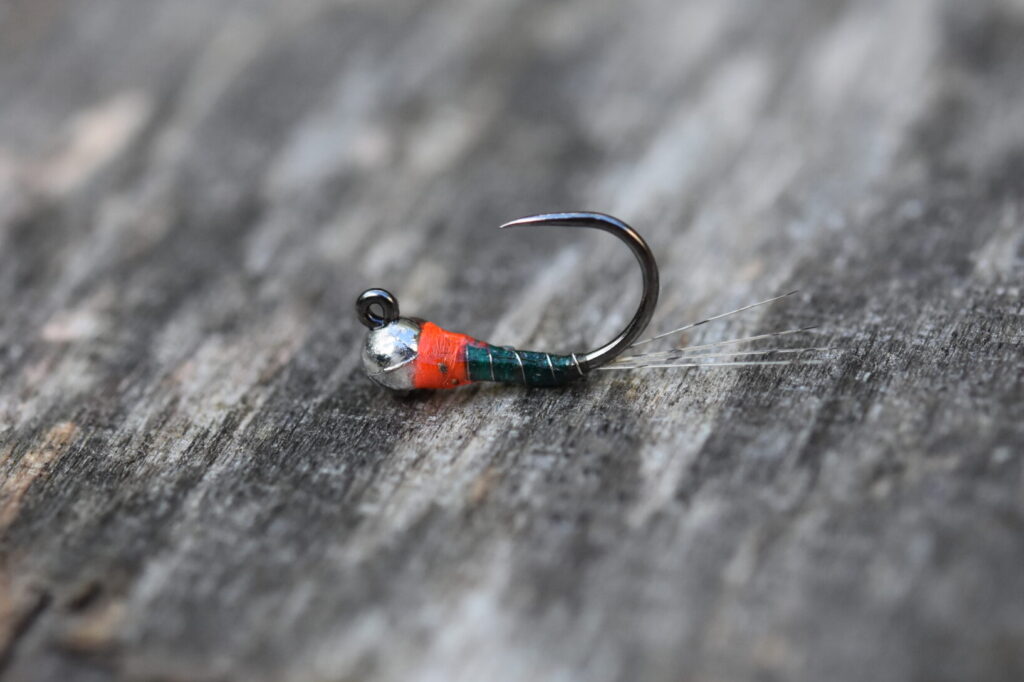Fishing and Tying Perdigons

Perdigons are Spanish nymphs, and their name loosely translate to mean “pellet,” like the pellets found in shotgun shells. Indeed, these slim, dense flies drop as quickly as lead balls through the water column, which contributes to their effectiveness on all water types, but especially high and fast water.
Although they were originally developed by Spanish competitive anglers, they were popularized by the French in the late 1980s. According to Umpqua, an early version of the Perdigon is “La Ceramique,” which was tied with a small metal ball behind the hook eye and the shank was painted with coats of varnish to reduce friction in the water and make them sink faster. Not long after that, brass, bronze, and then tungsten beads arrived on the scene.
“The perdigones, as we know them today, appeared in Spain about 15 years ago,” writes competitive angler Antonio Rodrigues on the Umpqua website. “By the beginning of the 2000s, my old friend José Carlos ‘Asturiano’ Rodríguez (a Spanish fisherman of high competing level), received from a friend, the ‘Catalan’ José María Cros, a nymph tied on a small hook, with bright thread, a small tungsten bead, a few turns of lead thread, and varnished with nail polish.”
Rodrigues continues: “Soon, among friends, they named these nymphs ‘Las Chinas’, alluding with this name to the varnish of nails that they bought in the chinese stores settled in Spain. Finally, Rodriguez renamed these nymphs as ‘Perdigones,’ when he gave some of his ‘Chinas’ to another fisherman and our common friend, Iñigo Urruzuno, and he reacted by saying: ‘But what do you give me here? Perdigones (Shotgun pellets)?’ After this anecdote and with the passage of the years, the perdigones have achieved a unique popularity among the nymph fishing specialists in the old continent and around the world.”
Fishing with Perdigons
Perdigons are practically synonymous with Euro nymphing. That is, after all, why they were developed. A combination of features – or I should say, lack of features – increases their sink rate. They incorporate no hackle, dubbing, or rubber legs. Perdigons are basically stripped-down flies that appear not much different than actual hard-bodied nymphs.
Their appearance is also their downfall, though, for many anglers. To some degree, many fly fishers and fly tyers have always been drawn to the aesthetics of the sport, attracted to flies that either look pretty or buggy or any combination of the two. It’s hard to get excited about tying up a batch of lacquered pellets. It’s also hard to have confidence in a fly that seemingly lacks life. That’s the purpose of all that hackle, dubbing, and rubber legs, after all – to give the illusion of a living insect in the water that fish will want to eat.
Use Perdigons often enough, though, and you’ll quickly realize their advantages and effectiveness. Yes, they sink like rocks. They’re ideal for fishing heavy, deep water where, if you don’t get down right away, you lose half your drift. They’re durable. Thanks to their epoxy coating, these flies can be beaten off of rocks until the proverbial cows come home and show no signs of wear. And they are simple to tie. In many ways, Perdigons are “guide flies,” which by definition are patterns that are easy and quick to tie but also catch lots of fish.
The heavy nature of Perdigons make them ideal for the anchor position in a two-nymph Euro rig. But also don’t overlook their potential in indicator rigs, too, in which case I use them on the dropper nymph closer to the stream bottom. When Euro nymphing, I will use larger sizes in the anchor, or point, position and smaller sizes as my tag flies, but rarely do I use two Perdigons at the same time. It’s my personal preference, when fishing any sort of tandem rig, to use two flies with nearly opposite qualities. So if one of my flies is a slim, bullet-like Perdigon, the other is likely to be a buggy Hare’s Ear, soft hackle, or stonefly.
When deciding which color Perdigon to use, I keep it fairly simple. I try to match the hatch as I would when using any other nymph. If Blue Wing Olives are active, I use a small, olive-bodied Perdigon. If March Browns are on the menu, larger, brown-bodied Perdigons get the nod. In low, clear water, I prefer dark-colored bodies, and high, murkey water bright-colored bodies. Also, as far as size and weight of the fly, I tend to go smaller and lighter as the water gets lower and fish get spookier.
Tying Perdigons
Perdigons often get tied on jig-style hooks, but the original versions were tied on conventional competition hooks which have a horizontal eye as opposed to the vertical eye found on jigs. It doesn’t really matter which hook you choose for this pattern. They will all fish well.
Hooks: The shanks I most often use are as follows.
- Fulling Mill 5045 Standard Jig Force or equivalent for sizes 10-16. The profile of these is great for standard mayfly nymphs.
- Fulling Mill 5125 Jig Force Short Shank or equivalent for sizes 18-20. These are 2X wide gape hooks with a 2X short shank. In small sizes, the wide gape allows you to over-bead the fly while not compromising hooking power.
- Fulling Mill 5067 or Firehole 316 (or equivalent) for sizes 12-18. These are Czech nymph, curved hooks ideal for caddis patterns and emergers.
Beads: I tie each of my Perdigons in a variety of weights. For instance, if I’m tying a size 16 BWO Perdigon in size 16, I’ll tie that pattern with 1/8 and 3/32 beads, but I’ll also tie versions with extra lead underbody wraps as well as a few with no lead underbody wraps. Even when adding the lead wraps, you can keep the body thin by pushing the lead wire up into the bead, which can then be locked into place with a few thread wraps immediately behind it.
Tail: Most Perdigon patterns utilize a few strands of Coq de Leon (CDL) for the tail. These fibers are much more durable than pheasant tail, and the CDL has a certain shine and stiffness to it that other materials lack.
If you can’t find CDL to use for the tail, Semperfli Tail Fibre Fibbets are a great replacement. They’re durable and come in a wide variety of colors.
Body: Perdigon bodies can simply consist of thread wraps, stripped quills, or any number of synthetics such as Semperfli’s Perdigon Body. The most important part is to keep the body thin and smooth. This is sometimes easier with products like Perdigon Body, which is a tinsel-like material that lays flat. Another advantage of synthetics over thread is that you also get a more lifelike iridescence similar to natural insects and seemingly endless color options. You can tie them in colors to match specific insects in the water you fish, or tie them in general attractor colors. Get creative and see what you can come up with!
Rib (Optional): I tie Perdigons with wire ribs and with thread ribs. The main purpose of the rib is to create a segmented look and provide contrast in the body.
Thread and Hot Spot: I most commonly use 8/0 or smaller thread for tying Perdigons because it’s less bulky. When tying up a batch of Perdigons, I load two bobbins with contrasting colors of thread and use one for the body and another for the thread hot spot. The hot spot doesn’t always have to be much brighter, either. It can be just a subtle change of color, but it should be enough to create contrast. It’s also my opinion that the real secret to the success of any fly is contrast.
Wingcase (Optional): Many Perdigons (but not all!) incorporate a dark wingcase, typically applied with a black or brown marker before or after the fly is coated with epoxy. Is this absolutely necessary, and does it make a huge difference in the fly’s effectiveness? Probably not. But most tyers add it simply because it’s another point of contrast.
Epoxy Coating: Depending on the pattern and size, I use both thick and thin epoxy coating and use a UV light to cure it. Generally, the flies will be ready to remove from the vise in 10-15 seconds. Once cured, some tyers will coat the finished fly with clear nail polish to give them a lasting shiny look, but that’s not at all necessary, in my opinion. They look nice all lined up in the fly box, but the shiny coating won’t add anymore fish to the tally at the end of the day, and truth be told, in low, clear water, I find a duller, drabbier appearance more effective.
When applying UV coating, use a bodkin to spread the epoxy evenly over the body of the fly. I like to take the epoxy up onto the bead, as well, to give the finished fly a bullet-shaped profile.

Conclusion
Perdigons haven’t always had a place in my fly box, but over the past two years, I’ve been surprised to find myself tying them on more often. Two patterns, in particular, have caught a surprising number of fish for me: the BWO Perdigon and the Black Perdigon tied on a Czech-style hook. These have certainly attained “confidence fly” status.
I understand the aversion many anglers and tyers might have to Perdigons. They don’t look like the traditional imitations that have always graced our fly boxes, and tying them doesn’t require the skill of some of the more elaborate patterns.
Make no mistake, though. They may not always be the prettiest flies in your box, but Perdigons just might be the most effective.
Did You Find This Fly Tying Guide Helpful?
Stay up to date with the Dark Skies Fly Fishing monthly newsletter for free and receive the latest posts in fly fishing news, tricks, tips, and techniques, stream reports, as well as updates on new flies added to the Online Store and exclusive discounts!
Sign Up NowHave a fly fishing question you’d like answered? Drop us a line at info@darkskskiesflyfishing.com! If we use your question in a blog post or in the newsletter, we’ll send you a FREE fly box with a dozen of our favorite nymphs and dry flies!




